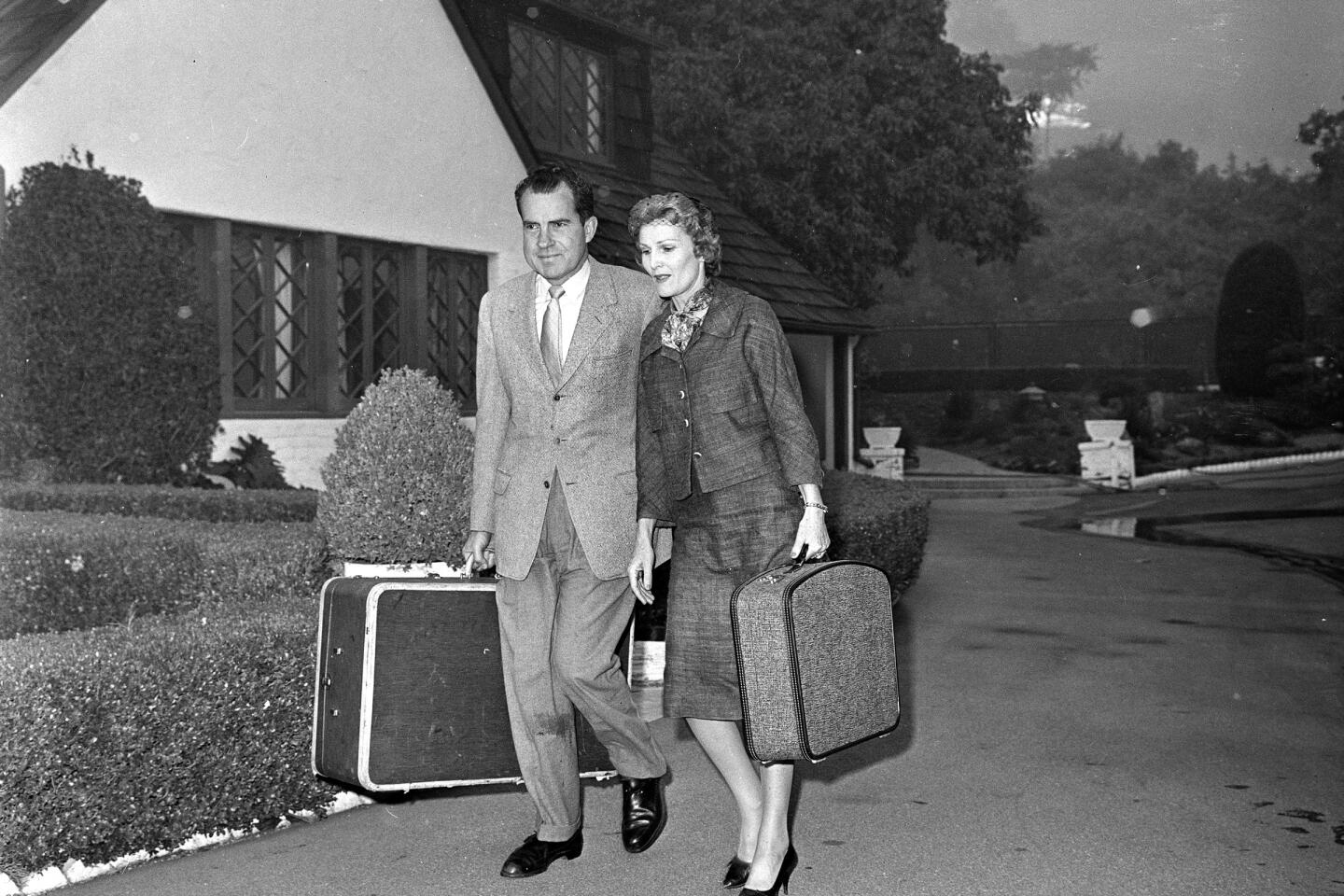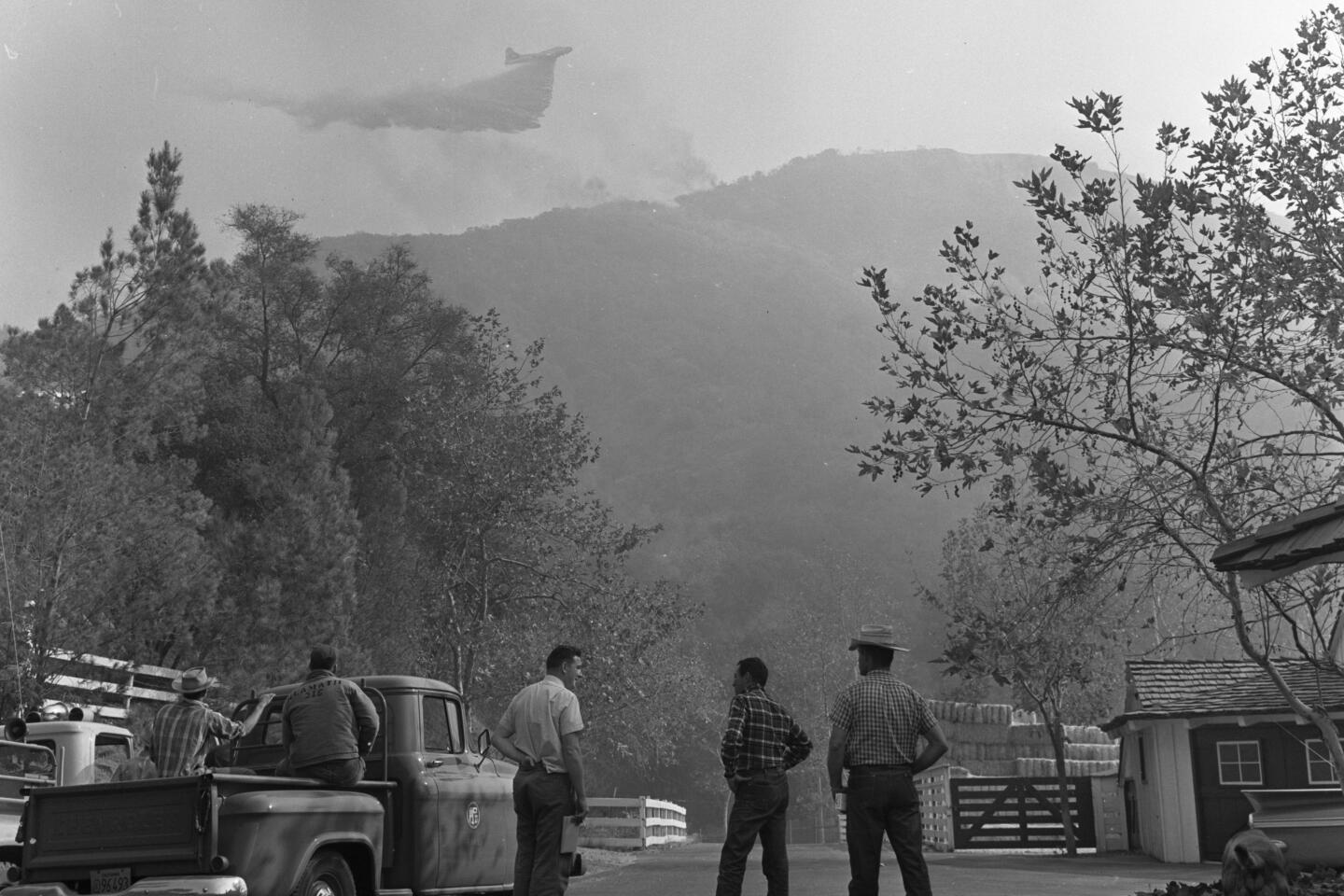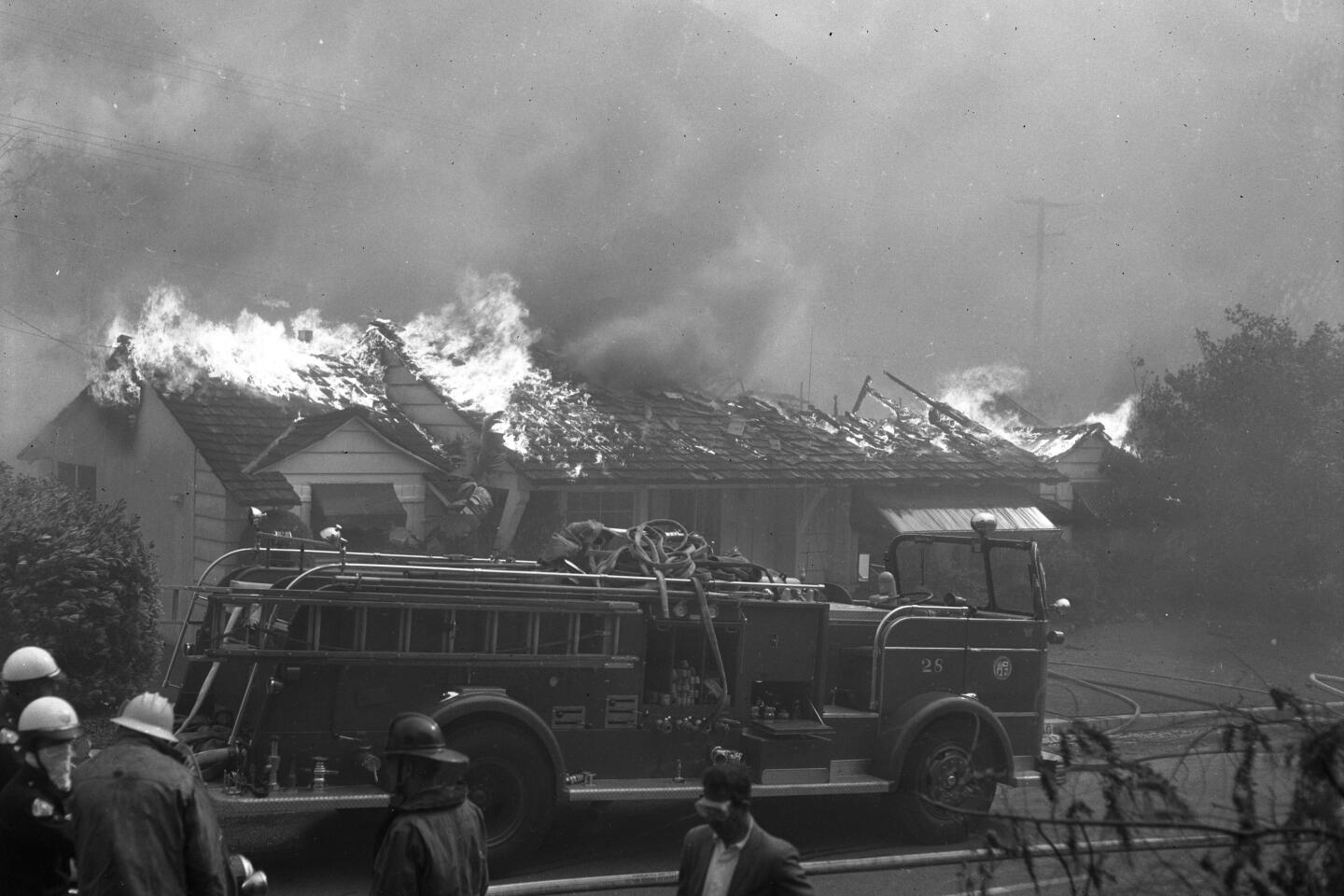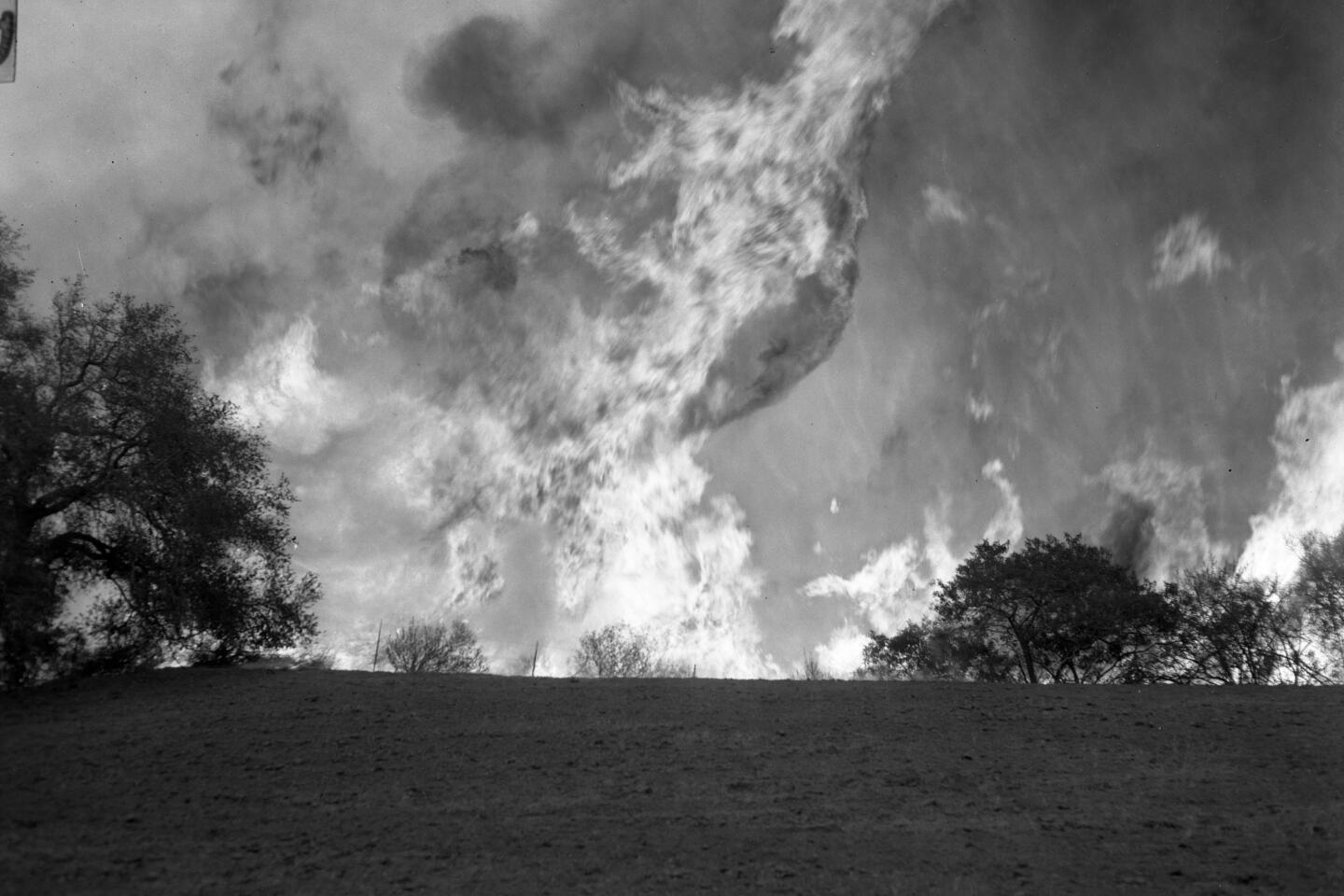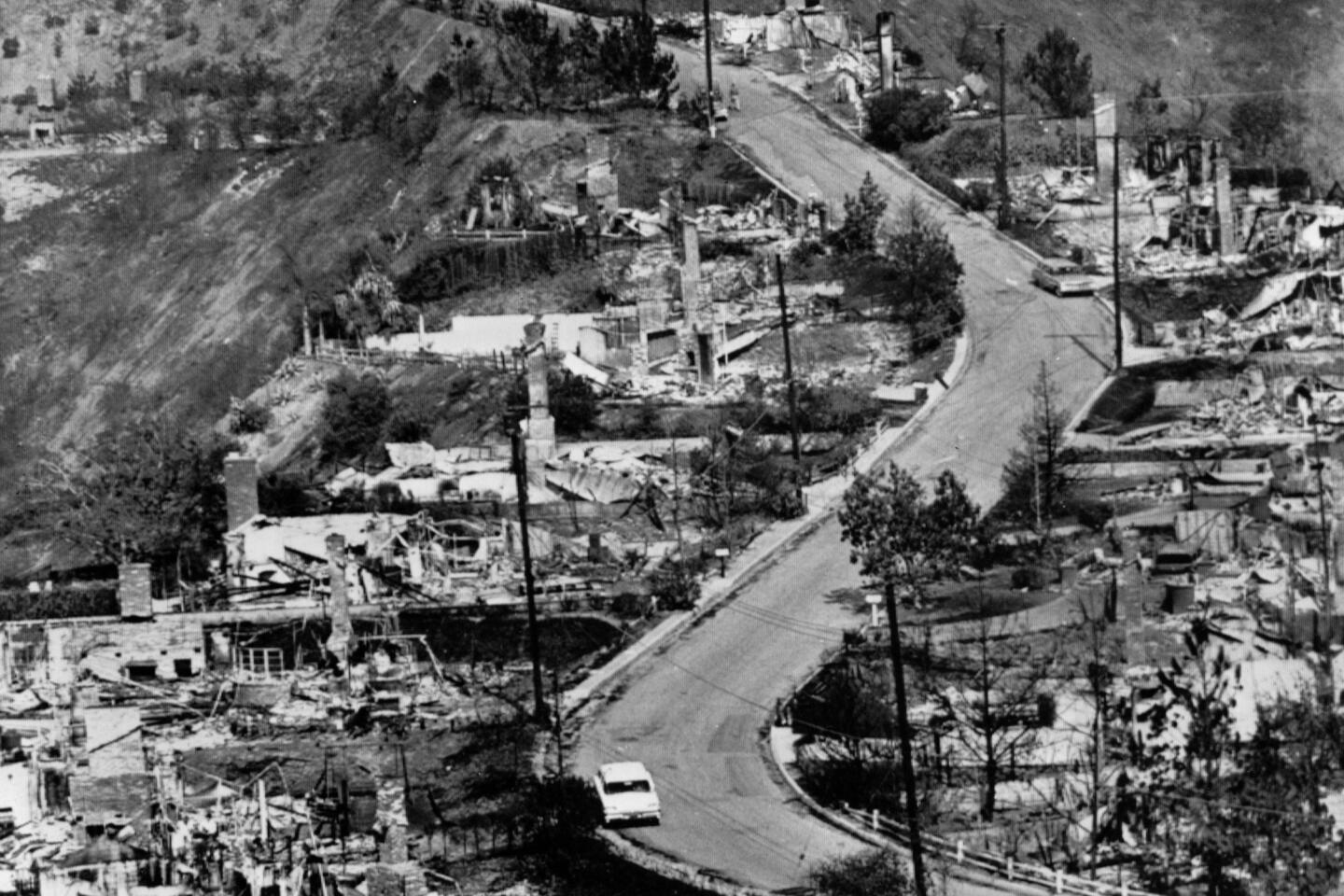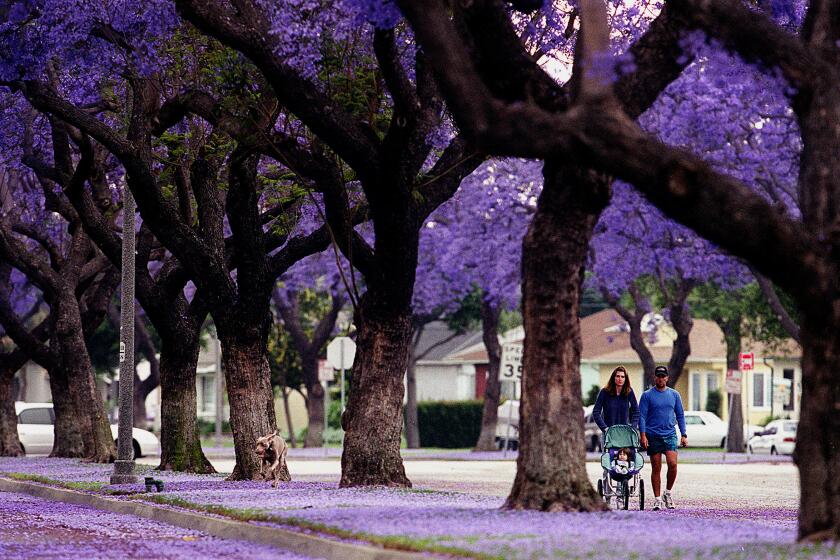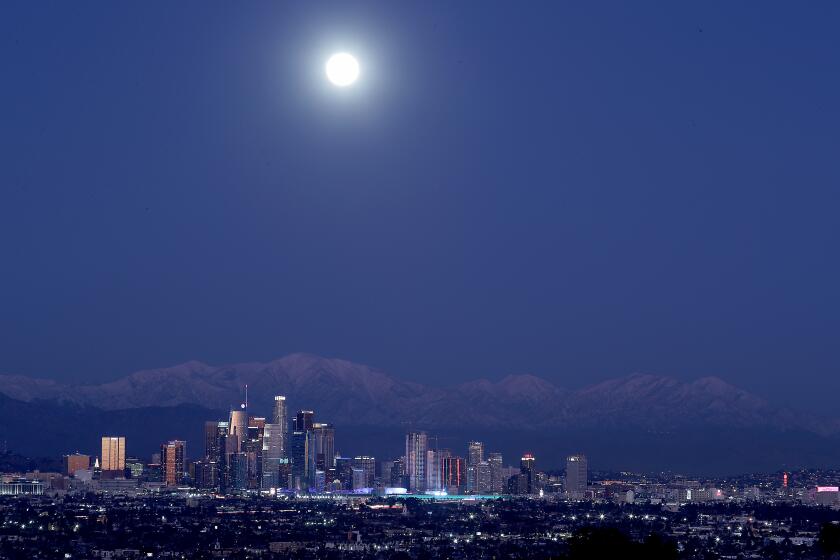Can you hear it? Can you feel it? Santa Ana wind season is back
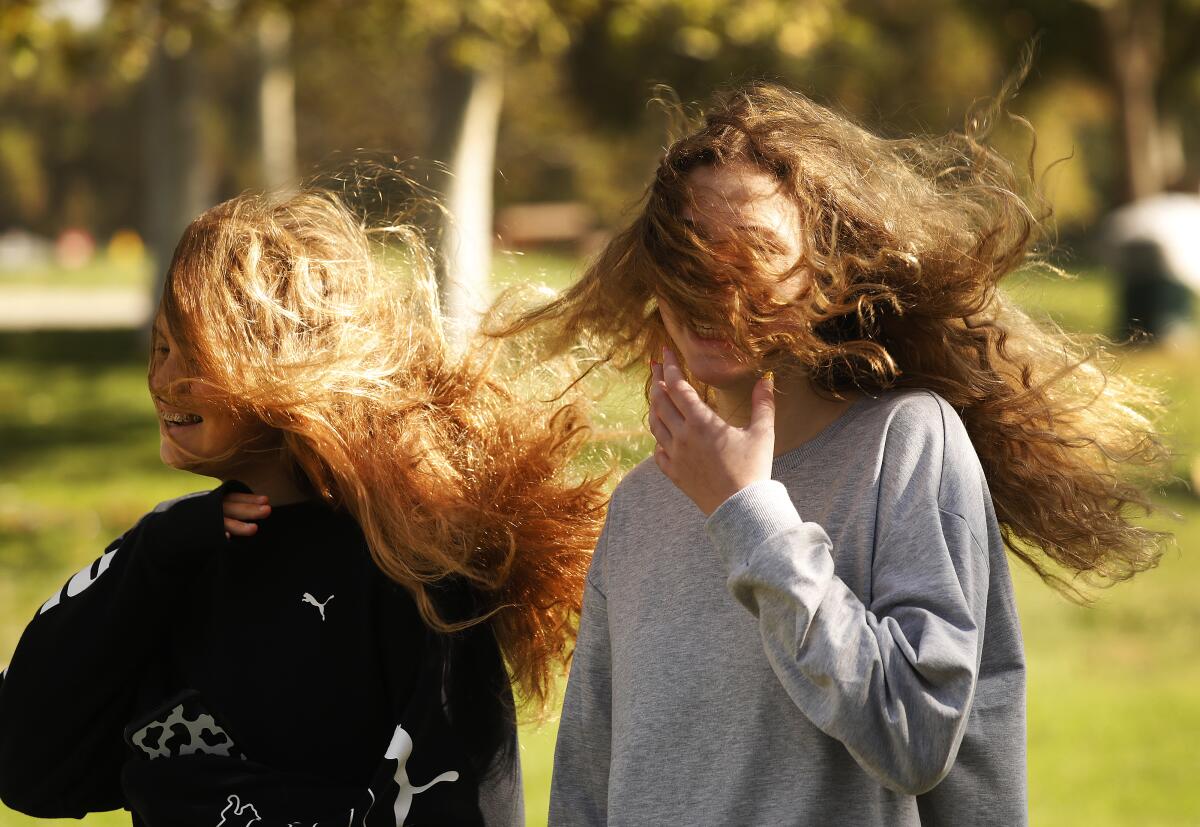
- Share via
For a Southern California reader to see that a Southern California writer is writing about the Santa Ana winds is like, well, learning that Dan Brown is writing about secret religious conspiracies, or that John Grisham’s new book goes on and on about a brilliant young lawyer tested by opportunity and ethics: OK, OK, we get it.
The Santa Anas are a toll that our putative paradise makes us pay.
They blow hot. They even blow cold. They may or may not incline us to murder, or migraines, or at least a seasonal snappishness. They scour the sky until it’s so high-res that you think you can make out individual pines on the ridgeline at Mt. Wilson, which looks no farther away than the end of the street. What else do you need to know?
Even more, I would suggest. Like a little fact-finding and a little myth-busting as the Santa Ana season begins. At its outermost sprawl, it runs from Labor Day to Lent, but it does its worst in September and October.
Like earthquakes, these winds have built themselves into the mythic landscape of our brains. Writers treat the wind like character. Joan Didion did; Raymond Chandler, James M. Cain, Susan Straight, and María Amparo Escandón in her new novel, “L.A. Weather.”
These are immigrant winds, born in the Great Basin, between the Sierra and the Rockies. From there, they come down upon us, hurtling out of narrow mountain passes that squeeze them into a blowtorch mounted on a rocket.
Explaining L.A. With Patt Morrison
Los Angeles is a complex place. In this weekly feature, Patt Morrison is explaining how it works, its history and its culture.
They are so fast and superheated that in the course of descending a single mile, they can get 25 degrees hotter — an arson wind, a banshee wind, hungering for our crops of desperately dry trees and greenery, for our roof-tile-and-timber neighborhoods, for the arc and spark of our electric lines.
That edge of dread — feeling the wind rise and knowing what might happen next — makes the Santa Anas as wildly unnerving as the first tremor of an earthquake.
Fire and wind outrace water and human wit. In Northern California, where they go by the name “diablo winds,” they have put the Oakland Hills and Paradise to the torch. Here, they have burned through San Diego County and Malibu, and Bel-Air, where, in November 1961, fire burned through 500 houses. Richard Nixon, who had begun the year as vice president, stood in necktie and dress slacks on his shake roof, using a garden hose to soak the shingles.
Before Southern California was counting its population in millions and its rainfall in minuses, we didn’t always regard the Santa Anas with alarm. In October 1882, in the agricultural Los Angeles County that once was, The Times heralded “the first Santa Ana wind” of the season, remarking on its “advantage to orange trees, while it completely covers the face of the raisin [grower] with smiles.”
But “Santa Ana wind” stamps the Orange County seat’s name on a villain, and Santa Ana the city battled heroically but vainly to get you to stop calling it that.
Santa Ana Canyon was the place where the wind that whipped down into Orange County got a place name, as early as 1871 — when Orange County was still part of L.A. County — and the Anaheim Gazette evidently wrote of Santa Ana winds.
An indignant man complained to The Times in 1893 about the unfairness of it all. It is “not a Santa Ana wind any more than it is a Los Angeles, San Bernardino, Riverside or San Diego wind,” he preached; to call it that is “a gross injustice.”
Official Santa Ana never could nail that name into a coffin and bury it. The name was even amplified in 1901, after a Christmas Eve windstorm whipped up such a walloping mess that an Associated Press reporter made it national news with the name “Santa Ana winds.”
The poor Chamber of Commerce; a couple of years later, and again six decades on, the weather bureau affirmed and reaffirmed that “Santa Ana” was the sanctioned name. Santa Ana’s mayor, Allen Hall, appealed for mercy to the U.S. weather bureau, which remorselessly responded, “the name is used officially by the bureau.”
It still is. Twitter invites you to follow the government’s @sawti_forecast account, the Santa Ana wildfire threat index.
Should California be split into two states? Three? Six? At the very least, we’re due for another round of intrigue on an eternal question about the Golden State.
It was never a bell that could be unrung; the name is too exotic and singular. The Polish operatic actress Helena Modjeska founded a 19th-century utopian colony in Anaheim, but it foundered, in no small part because of immoderate weather, like the wind. In her 1910 autobiography, she wrote of the Santa Ana wind that “its breath dries up the plants, gives headaches to people, and prostrates them … it uproots trees, tears off roofs, and devastates fields.”
Hip tip: Do not think you are showing yourself to be an Angeleno insider by calling them “Santanas.” They are not “Santanas,” even though speakers of Spanish may smash “Santa” and “Ana” together into “Santana.” (The Times took editorial license in 1882 when it snarked that the Democrats were afoot in Santa Ana to unleash a “Santana” cyclone of political bombast upon the town.)
Nor does “Santana” translate to “devil wind” in Spanish; “Satan” in Spanish is “Satanás.” Volkswagen put the name “Santana” on a line of its cars, and its marketing research department was surely cautious enough not to allow a marque that had satanic connections roll off its assembly line.
An Orange County historian named Chris Jepsen unearthed the nugget that in 1922, a Santa Ana man who went by the name of Cotton Mather argued stoutly that “Santana” was a Native American term for windstorm. Stuff and nonsense, say the linguists. (Orange County’s Cotton Mather was named for and descended from the Puritan preacher Cotton Mather, who paradoxically hunted witches and also endorsed smallpox vaccinations.)
And as mightily as the Chamber of Commerce tried to shift the blame elsewhere, the winds are not double-n “Santa Annas,” named for the legendary Mexican general, supposedly because of the dust kicked up by his cavalry — a cavalry which, by the way, never rode anywhere in California.
You can determine L.A.’s seasons by our plant life. For example, right now, it’s jacaranda-blooms-stuck-to-your-windshield season. And to understand the Southern California landscape you see, you have to realize that, like you, it is probably not from around here.
What’s a lot more plausible than these fanciful tales is the useful nomenclature of geography, like the story recounted to The Times in 1933 by a priest at the San Juan Capistrano mission. The reporter was probably assigned to the story because in 1933, Santa Anas topped 60 miles an hour, smashed boats, unroofed buildings, and relocated about 14 million tons of dust.
A parishioner named Magdalena Murrillo, born on her family’s Las Bolsas rancho just before California became a state, in 1850, remembered that during the Santa Ana season, her family never cooked over a fire, but ate its meals cold, for fear of fugitive embers, and that the winds stirred up “una polvareda grande,” one hell of a dust storm. Into one of them, an uncle of hers had been swallowed up.
“Santa Ana” joins a long list of names of strange and unsettling winds around the world: the khamsin, harmattan, ghibli, and sirocco … the chubasco, zonda, and Tehuantepec … the foehn, and the simoom, a word beloved of James Joyce, and for my dough, the even more splendidly named williwaw.
We have no choice but to cohabit with the Santa Anas, their dangers and crackling intensity. So come up with some personal mythologies, like the Santa Ana that was so strong it tore your Angels cap off your head and blew it all the way to Surf City. Or the Santa Ana wind that was so hot it air-fried a Thanksgiving turkey sitting on the kitchen counter.
Or you could master a karaoke version of Eric Michael Roy and “Santa Ana Winds,” from the gone-but-adored TV show “Crazy Ex-Girlfriend,” set in the wind-beset city of West Covina:
“Hello there, it’s me / I’m the Santa Ana winds / I cause allergies / I also make things weird.”
L.A. is a place like no other. You’ve got questions. Patt Morrison probably has answers and can definitely find out.
More to Read
Sign up for Essential California
The most important California stories and recommendations in your inbox every morning.
You may occasionally receive promotional content from the Los Angeles Times.

